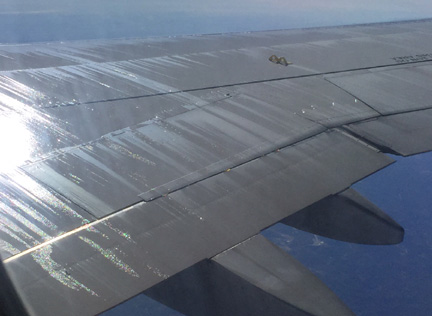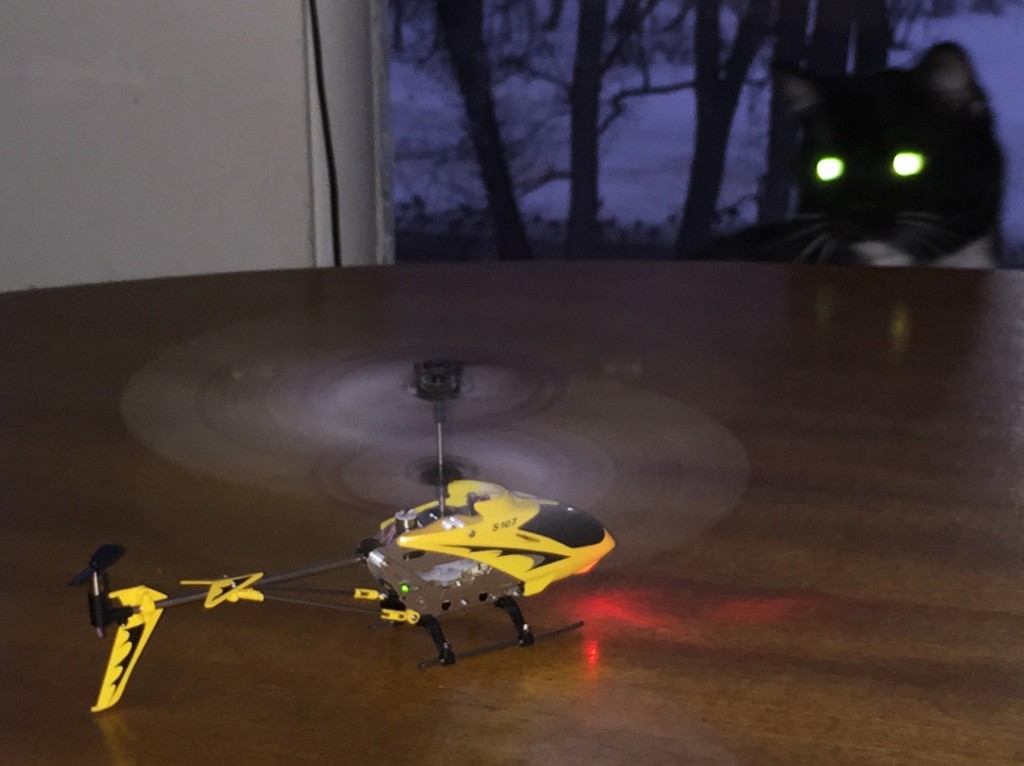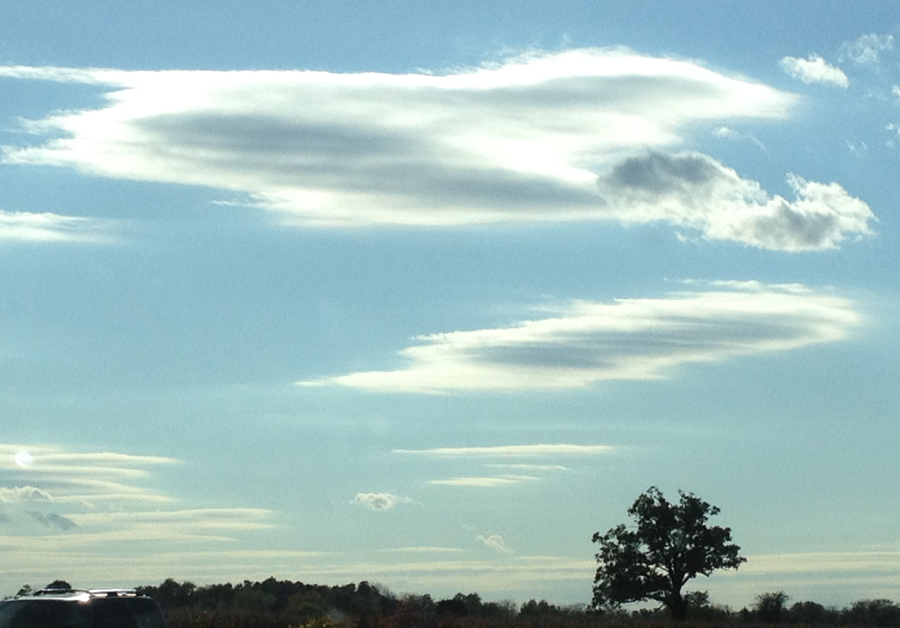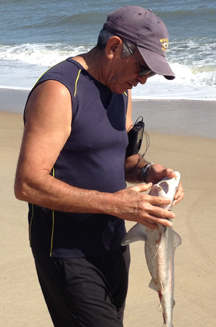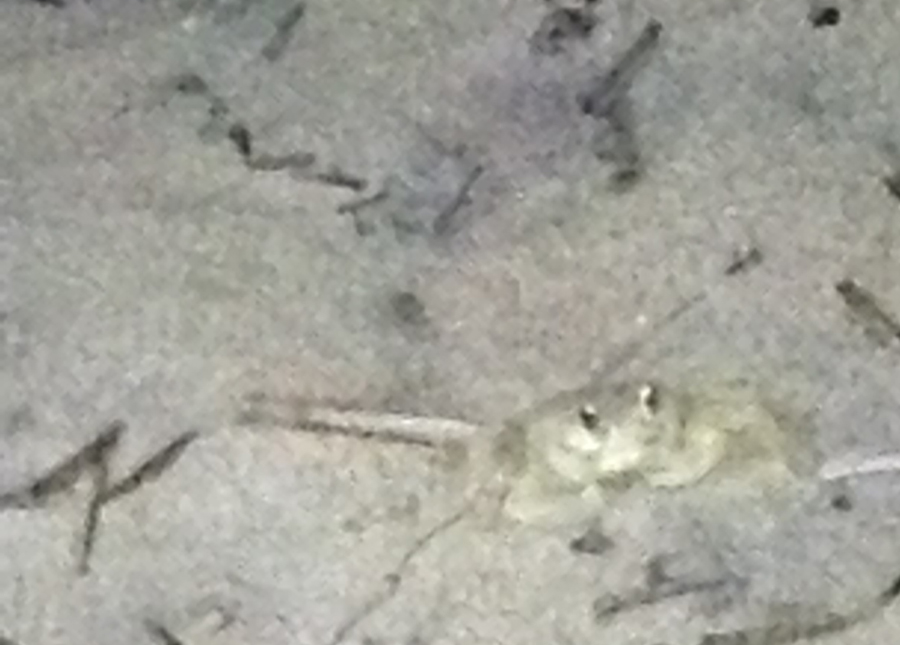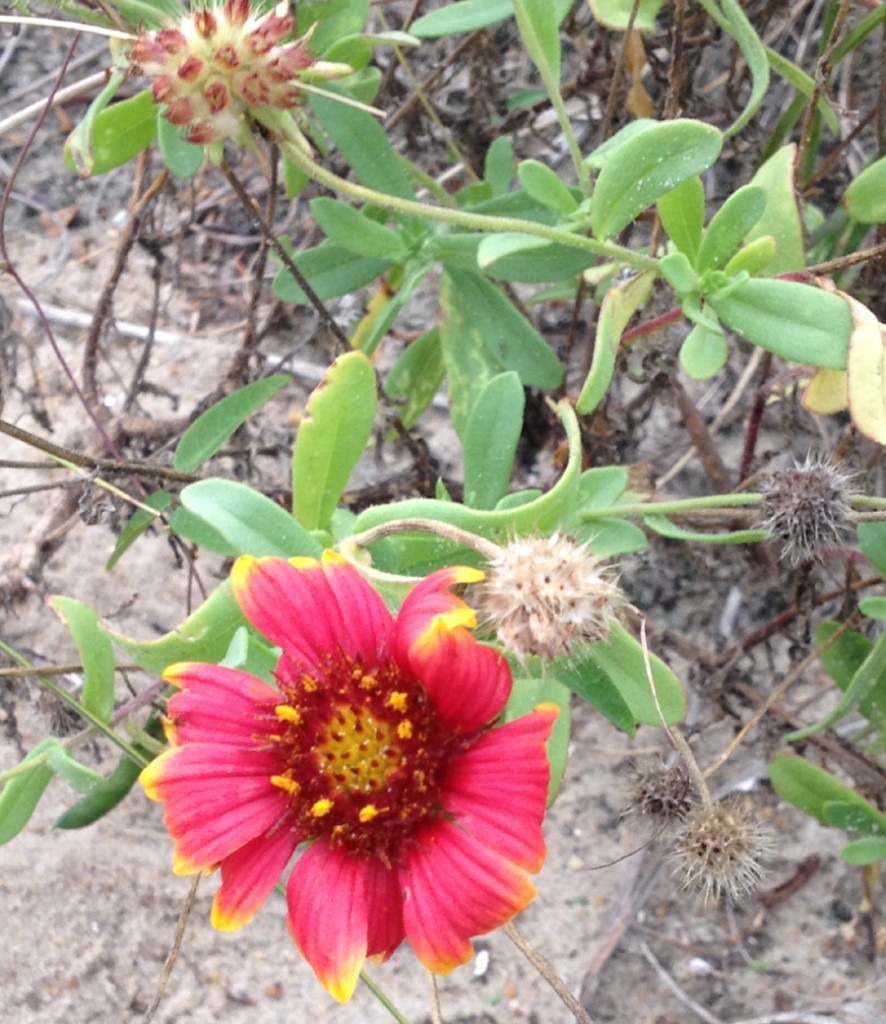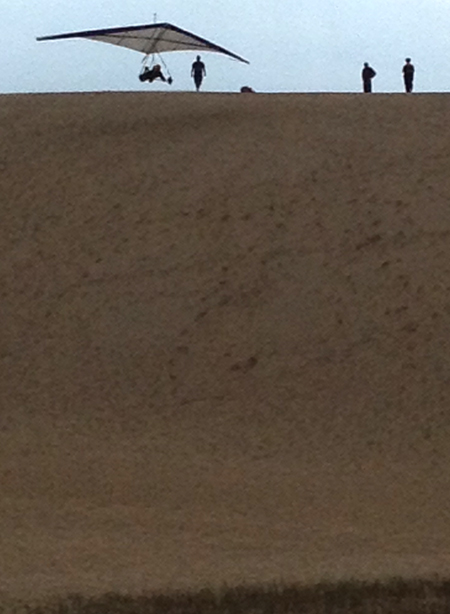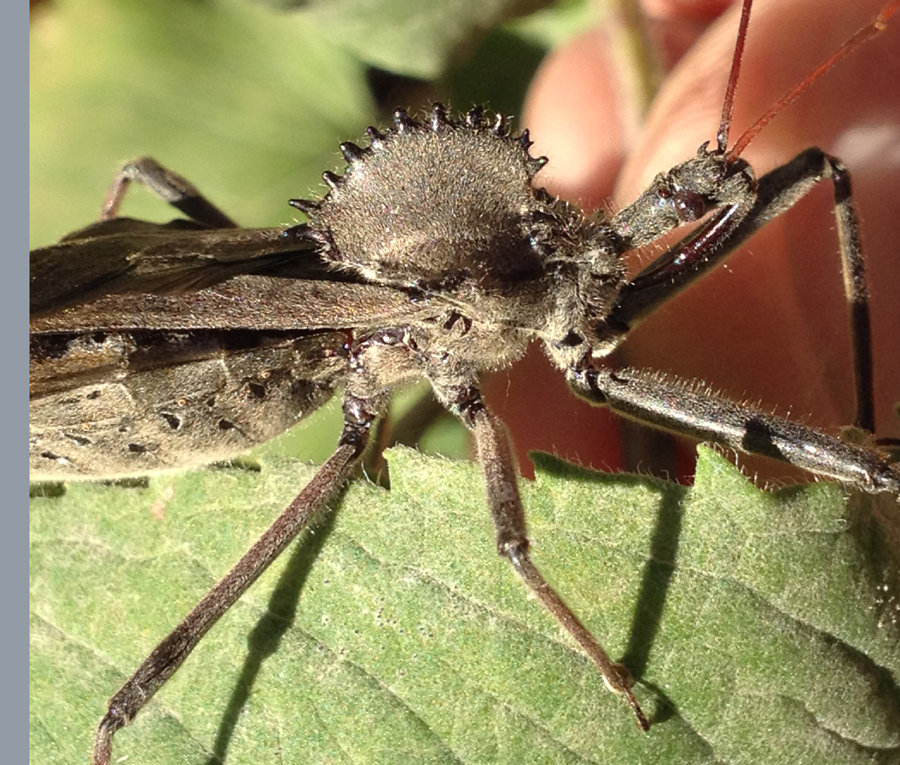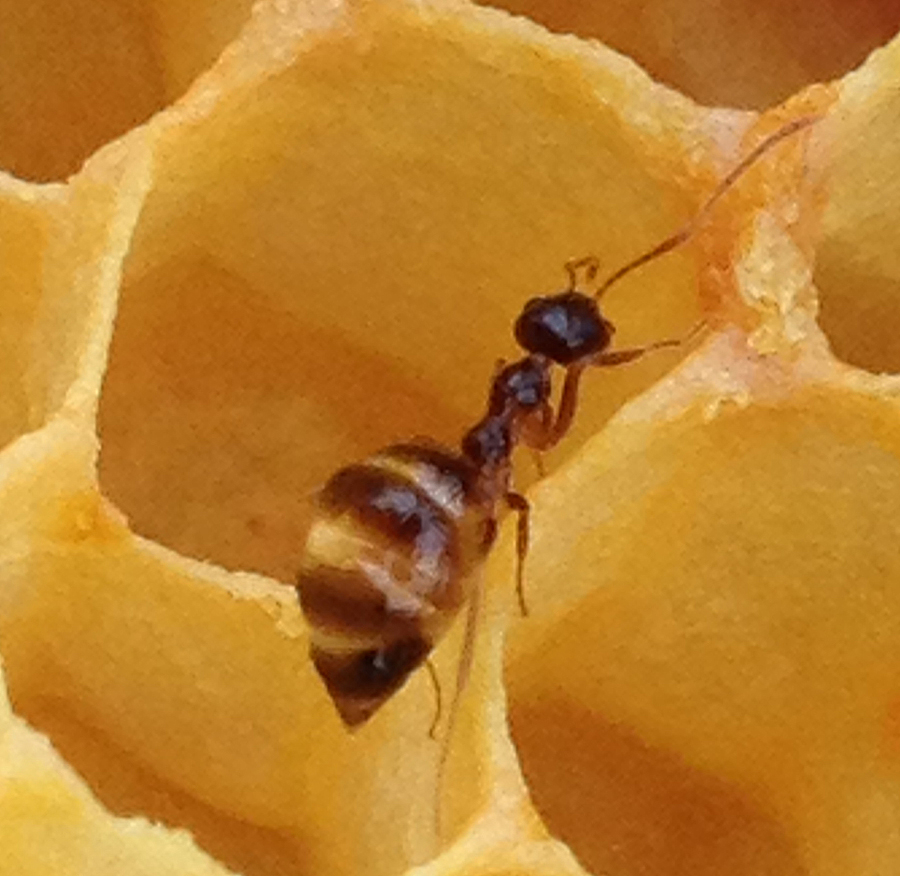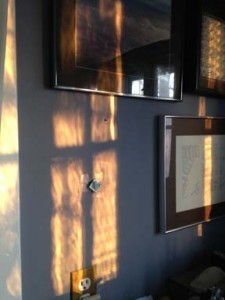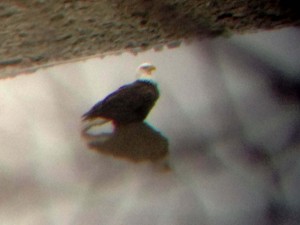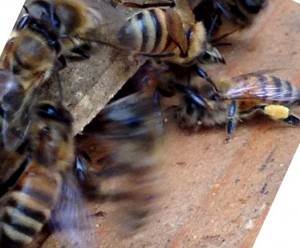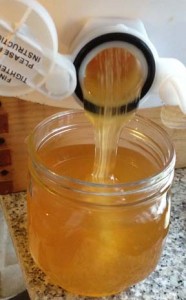Cross-Country Skiing in Perrysburg.
There are now 2 Cross-Country ski trails open along the Maumee riverside at Perrysburg for would-be winter fliers.
I groom both trails, usually on a daily basis, unless I’m out of town, or the temperature is below 15 F ( -10 C). This week the “Frisky Fox” trail certainly qualified as a ‘Winter Flier’ because of its awesome speed. A week ago the temperature rose to 50 F (+10 C) and then quickly dropped below freezing, but not before the set tracks froze firm. After that both trails had the lightest dusting of fine, flour texture, powder snow and have been awesome fast. Fortunately “Bunny Hop” is mostly level and can be easily handled, but the Fox is almost too frisky right now for all but the most reckless!

The easy 20 minute “Bunny Hop” run starts at Riverside Park just upstream from the Perrysburg Boat Club at Louisiana Ave.
The groomed trail runs west along the grassy path of Water Street and follows a wild life corridor around the old abandoned skating rink in Orleans Park. Watch for deer hoof prints in the snow. They, and the coyote, like that trail. They also leave droppings which may or may not alter your ski wax application! Here are the prints of goose wing feathers as they made a hurried take-off down the slope. The snow was too soft for them to get a good foothold:

The more challenging “Frisky Fox” run takes an hour on a good day.

It starts at the cannons, from the original USS Constitution, on the hill at the east end of Riverside Park. Follow the groomed trail down the hill to the river’s edge, then up and down through the trees, back and forth across the straight and level Bunny Hop trail.
At Orleans Park the trail goes under the Maumee/Perrysburg bridge, around Fort Meigs, and back. The north face of the Fort is steep and fast so clockwise around the Fort gives the fastest run down the slope. I’ve just reset that part further west to avoid the toboggan runs which quickly get very icy. Anti-clockwise around the fort is recommended if you like it a little slower.
These two trail maps were created with the free “Trail Explorer” iPhone ap from the Sierra Club. It plots your trail, to within 30 ft (10 m), records altitude climbed and descended, and calculates average and peak speeds. (So far it says I’ve only attained a miserable 12 mph but that’s quite fast enough on cross-country skis for now).
When it warmed up last Sunday many bees flew out to relieve themselves for the first time in months:

Don’t eat the yellow snow!
Some landed on the snow which cooled them too much and they could never fly again. Hopefully they were only the feeble old ones who are not needed for the spring rebirth?
Down by the river two swans did fly by, but this elegant winter flier has hung around for a week. The Ringed Kingfisher was diving down to the last of the unfrozen water. He can swivel his head nearly a full circle while searching for food:
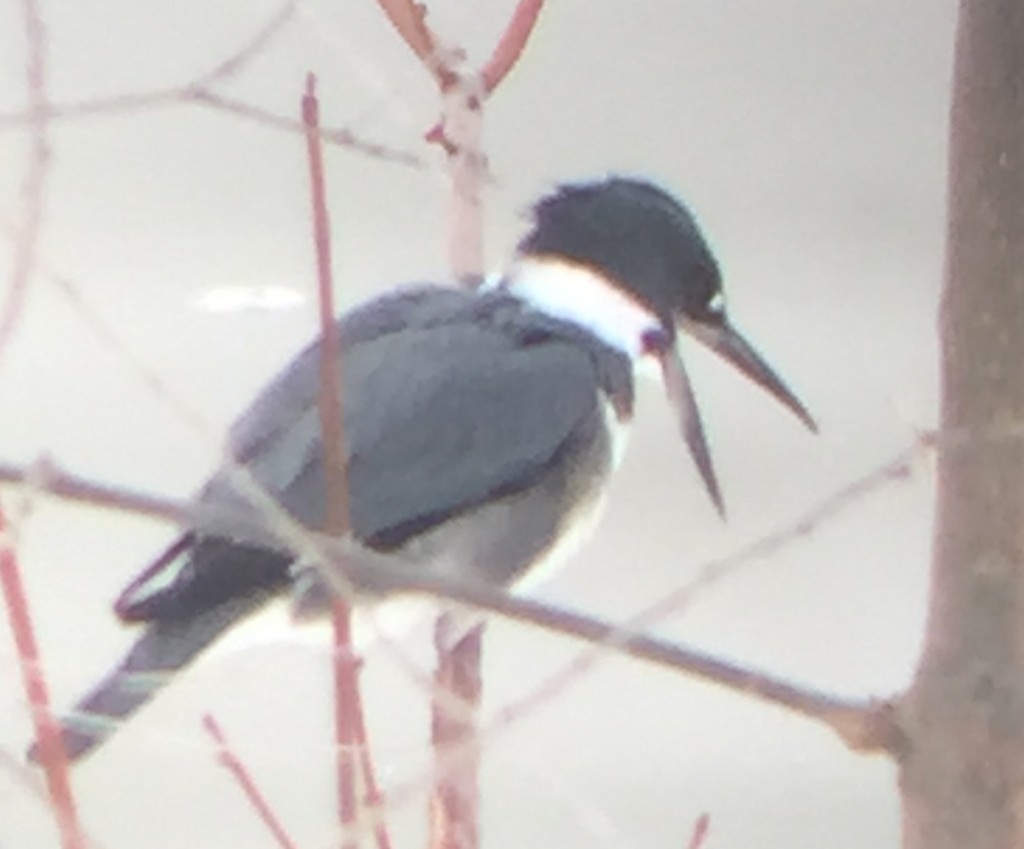
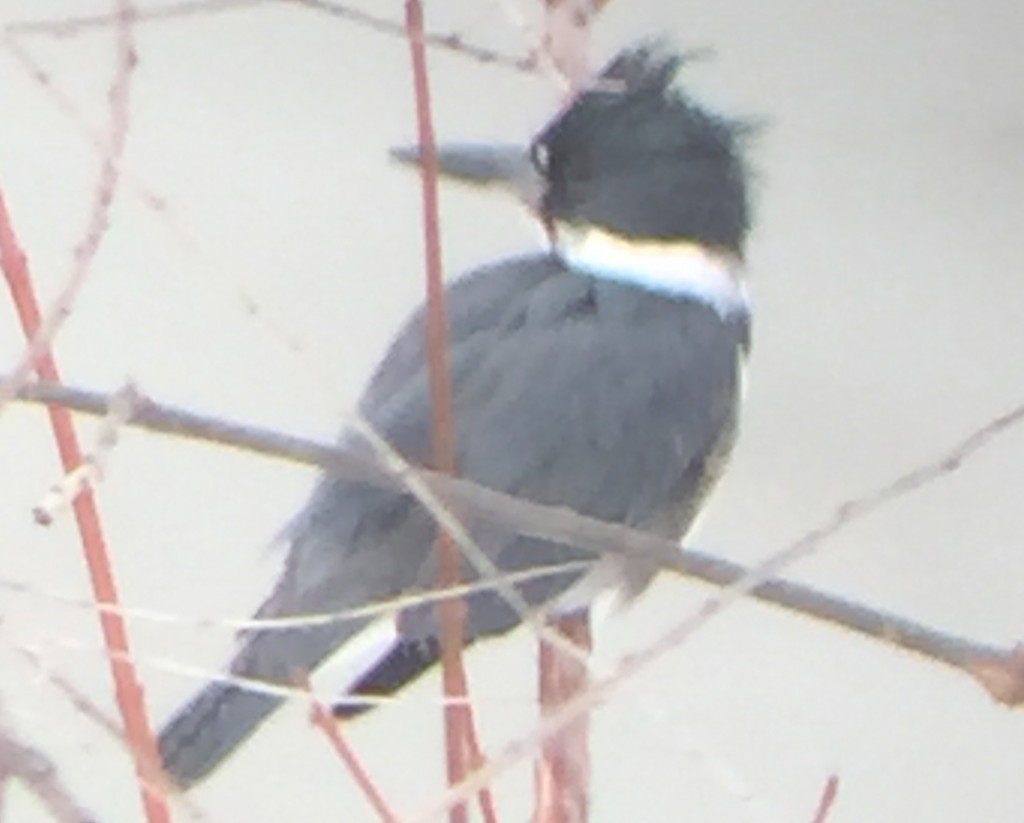

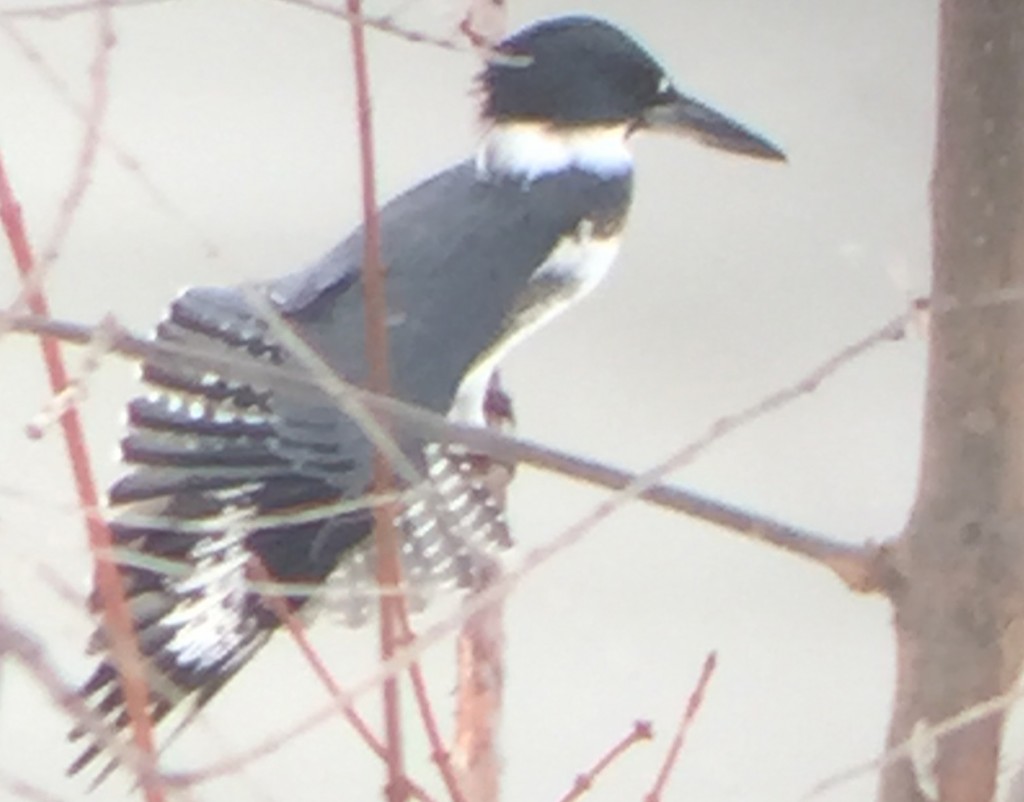
I get the feeling I’m helping replicate the evolutionary development of the flying squirrel. Not content with eating on the ground the spilt seed from the birdfeeder, the squirrels now insist on eating at the source. They climb along the window sill, past the powerless cats,
They evade the deterrent wires I put there, and then leap to the feeder.
With lines and pulleys the feeder is now about 25 ft (8 m) up in the air and at least 8 ft (2.5 m) out from the house.

All it does is select the more agile animals. When I bang on the window the squirrel leaps from the feeder, spreads 4 paws and does a good, aerodynamic, laminar flow, glider-suit style descent.

(The following 2 videos may need you to click OK for Quicktime to play them)
http://341ontheriver.com/wp-content/uploads/2015/02/Banging-on-Window_4229.movWith a good launch they land at least 10 ft out from take-off point. Now a glide angle of 10 forward for a 25 drop would not have satisfied the Wright Brothers, but it is a definite start in evolutionary progress. Some though, when stuffed with bird seed, are too fat to fly and do drop straight to the snow. As you can see, no squirrels were harmed in these feedings!
http://341ontheriver.com/wp-content/uploads/2015/02/Slippery-Roof-4010.movI Foolishly tried to connect through Chicago airport while travelling last month (January) – big mistake. Winter flying demands a few good books to help with the inevitable 2, 4, and 18 hour weather delays of the last 3 trips. Following images are from some of those flights.
The deicers can spray all they want,

but it is still not comfortable when you can’t see out the window for ice and slush as you taxi for take-off.

Once airborne the air stream slowly blows most of it off,
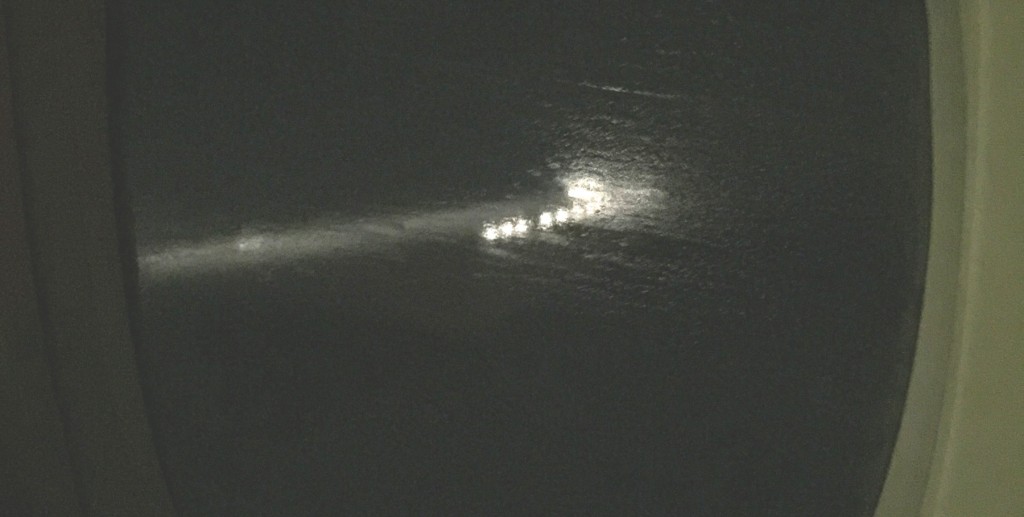
but even an hour after take-off there was still deicing fluid oozing out of the wing .
I tried to photograph the snow in the flash of the plane’s strobe every 5 seconds but could not catch it. One can’t hold an iPhone ‘shutter’ open for a time exposure, so I simply took a video and deleted all the frames which had no strobe flash to get the following photo:

You know coming in for a landing in snow is an issue when the pilots turn on the spotlight to see if snow and ice are accumulating on the wings:

Back home Pinot
finally downed my little miracle $35 remote controlled helicopter ‘Winter Flier’.
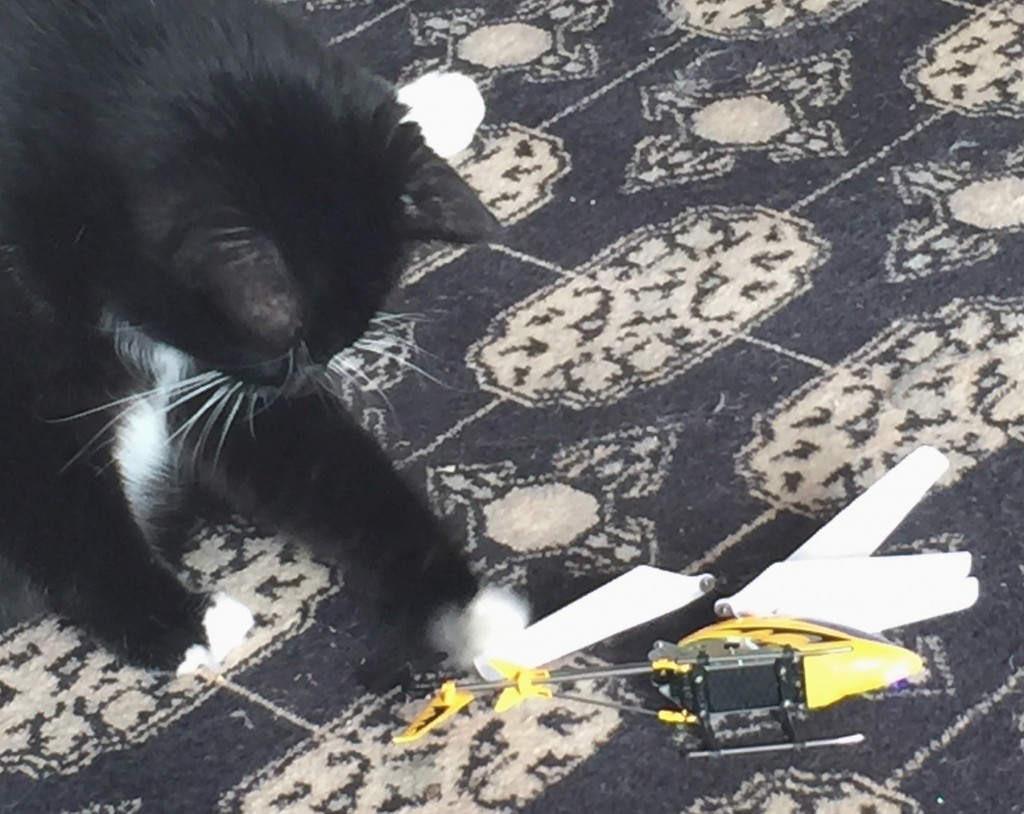
No damage – it’s virtually indestructible. What an amazing toy for boys!
And finally I have to admire this elegant ice crystal ‘Winter Flier’ apparently trying to jump like the squirrel
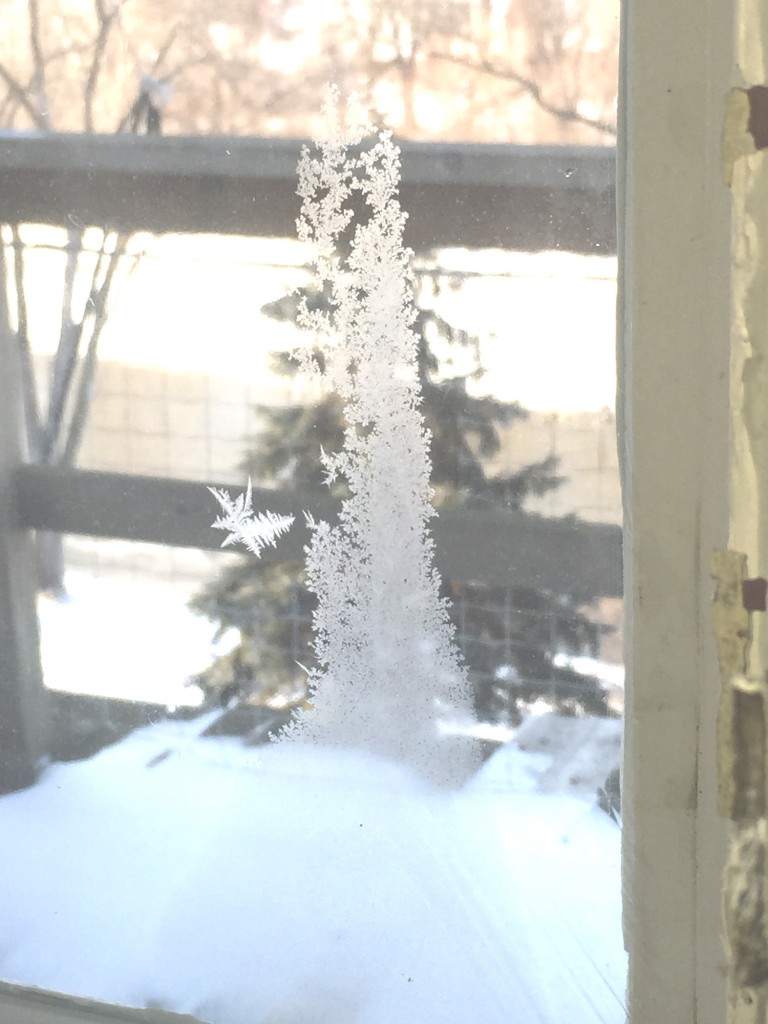
or perhaps more like the drones being ejected from the hive.

